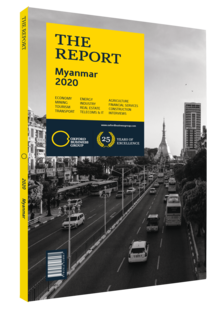Myanmar Tourism Bank opens to support Myanmar's tourism and hospitality sector
Myanmar is looking to capitalise on a recent tourism rebound and stimulate more investment in the sector, following efforts to improve access to credit for smaller operators. In May 2019 the first branch of the Myanma Tourism Bank (MTB) – the country’s first bank dedicated to supporting the tourism and hospitality sector – opened in Yangon. Branches in Mandalay and Naypyidaw are also now in operation, and the MTB hopes to open a further seven branches over the short term. Backed by the Myanmar Tourism Federation, the bank had an initial capitalisation of MMK22bn ($14.3m), with funding provided by the lender’s 26 shareholders, all of which are in the tourism industry. The MTB is focused on providing low-cost, long-term loans to the sector, particularly to the small- to medium-scale segment, and will offer most of the services provided by commercial banks.
The MTB was one of five lenders to be given licences in 2018 to provide services to specific industries, with the others focusing on agriculture and minerals. The institutions form part of a broader drive to ease access to credit for smaller companies. Additionally, the Central Bank of Myanmar altered collateral restrictions to stimulate investment by smaller operators in February 2019.
Foreign Investment
The launch of the MTB and the easing of collateral requirements come at a time when Myanmar’s tourism and hospitality sector is being outpaced by other industries in terms of foreign investment. According to figures from the Directorate of Investment and Company Administration, foreign direct investment (FDI) in tourism amounted to $177m in FY 2017/18, out of a total of $5.7bn, compared to manufacturing at $1.8bn, transport and communications at $901.6m, power at $405.7m and real estate at $208.4m. The FY 2017/18 figure was less than half the $404m registered the previous fiscal year, and investment continued to drag into 2019, with $82.6m registered in FY 2018/19, as of September 2019. The slow pace of FDI flows to the tourism sector may reflect market concerns over Myanmar’s visitor appeal amid ongoing internal unrest. The OBG Myanmar CEO Survey released in July 2019 suggests this trend is not limited to tourism: some 70% of executives surveyed said FDI flows to their respective sectors were impacted by the international community’s perceptions of Myanmar’s internal affairs.
Source Markets
While investment has been sluggish in recent years, new data suggests the sector is experiencing a rebound in arrivals amid shifting demographics. Around 3.6m tourists visited Myanmar in 2018, and in the first eight months of 2019 the country welcomed 2.8m visitors, a 25% year-on-year increase, according to the Ministry of Hotels and Tourism. This signals the country may be in for its strongest year since 2015, when it hosted 4.6m visitors, and well above the 2.9m and 3.4m it welcomed in 2016 and 2017, respectively. There have also been some interesting market trends, with the number of visitors entering via land border posts (2.2m) in 2018 outpacing those via air (1.3m). This reflects an increase in flows from neighbouring and regional markets. In 2018, 333,085 visitors from China entered the country, followed by 291,231 from Thailand and 104,376 from Japan. These Asian visitors have helped offset a fall in traffic from more traditional source markets such as those in Europe, the US and Canada. That same year 65,057 visitors came from the US, 43,218 from France and 36,609 from the UK. “With inbound tourism demographics shifting towards our neighbours, there is a significant opportunity to cater for the increasing number of Chinese tourists,” U Aung Thein Naing, managing director of AJ Myanmar, told OBG. “Their preferred destinations remain fairly limited at present, but Mon State holds great promise as tastes develop.” Mon state is home to numerous Buddhist temples.
You have reached the limit of premium articles you can view for free.
Choose from the options below to purchase print or digital editions of our Reports. You can also purchase a website subscription giving you unlimited access to all of our Reports online for 12 months.
If you have already purchased this Report or have a website subscription, please login to continue.

